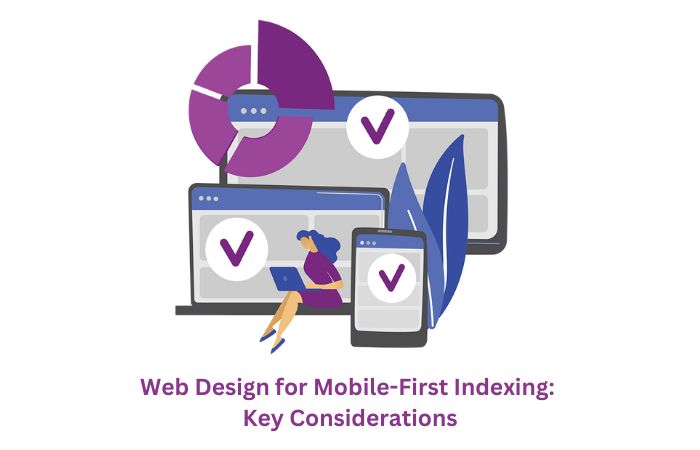With mobile internet usage now exceeding desktop usage globally, mobile-first indexing has become a crucial consideration for SEO and web design. Google confirmed that mobile-first indexing is already the default for new websites, so optimizing for mobile is more important than ever.
Here are some key web design considerations for mobile-first indexing:
Responsive Design Having a responsive design that adapts seamlessly across devices is essential. Ensure your site resizes, reflows, and displays properly on any screen size. Test thoroughly on real mobile devices, as just resizing the browser window doesn’t reveal all issues. Strive for a seamless user experience regardless of device. Use media queries and fluid layouts to create fully responsive designs optimized for any mobile screen.
Page Speed
Page speed has a significant impact on metrics like bounce rate and conversions. With mobile data speeds still lagging desktops in many regions, optimizing page speed is critical. Leverage browser caching, lazy load images, minify CSS/JS and simplify page architecture to improve speed. Test with online tools like Google PageSpeed Insights and GTmetrix. Optimize images properly and leverage AMP or PWA technology for maximum speed.
Tap Targets
With smaller screens and touch inputs on mobile, tap targets like buttons and links need to be large enough for accurate tapping. Ensure tap targets are at least 48 CSS pixels in size and have enough spacing between them.
Navigation Menu
The navigation menu needs to be thumb-friendly on mobile. Use large, tappable links rather than complex dropdown menus. If using a hamburger menu, ensure it’s clearly visible and keeps key navigational links in reach. Allow users to easily find what they need in just a tap or two.
Forms
Entering data on mobile can be tedious, so simplify forms as much as possible. Use short, single-screen forms with elements like radio buttons, toggles, and dropdowns instead of free text fields. Allow auto-fill wherever possible. Break long forms into logical sections with clear headings and descriptions.
Page Architecture
Avoid long vertically scrolling pages on mobile. Use accordions, tabs, and hierarchical navigation to present information in digestible chunks. Important content should be above the fold, with helpful headings and bulleted lists for easy scanning. Use white space, borders, and backgrounds to visually separate sections.
Image Optimization
Large images can ruin page speed on mobile data connections. Compress and optimize images, use WebP/AVIF formats, and serve properly sized images for the device. Provide “@2x” versions of images for high-resolution displays. Set image dimensions in HTML/CSS rather than HTML width/height attributes.
Local Optimization
Having accurate business info like opening hours, address, and phone number makes it easy for nearby mobile users to visit your business. Ensure your Google My Business and other listings are filled out properly. This helps rankings for local search queries.
AMP Pages
Google’s AMP (Accelerated Mobile Pages) framework can dramatically improve page speed. Consider implementing AMP, especially for content-focused pages like blogs and articles. Ensure AMP pages are integrated properly for indexing. Use the official AMP plugin or libraries to easily generate optimized AMP markup.
Progressive Web Apps
PWAs load like websites but can also be installed on mobile home screens like native apps. They offer reliable performance through service workers caching content. Making your site a PWA provides a more app-like experience. PWAs can send push notifications, work offline, and load instantaneously when opened.
Mobile Pop-ups
Overlays and Interstitials Use overlays and pop-ups sparingly on mobile. Interstitials that block the entire page are highly annoying. If using pop-ups, make the close button easy to tap and don’t bombard mobile users. Avoid anything that disrupts mobile usability.
Site Search
An effective site search is essential for mobile users to easily find information in your site’s content. Test search on mobile and optimize for small screens. Autocomplete and suggestions help users quickly get results.
Security
Mobile connections often use public WiFi which raises security risks. Use HTTPS on all site pages and implement HTTP Strict Transport Security. This encrypts connections and prevents downgrade attacks.
With the rise of mobile, following these web design best practices is key to providing the best user experience and SEO performance. At LaconicWorld, our web design services keep mobile-first indexing at the core of our process to maximize your search visibility and conversions. Contact us today to learn more!
Read More :
